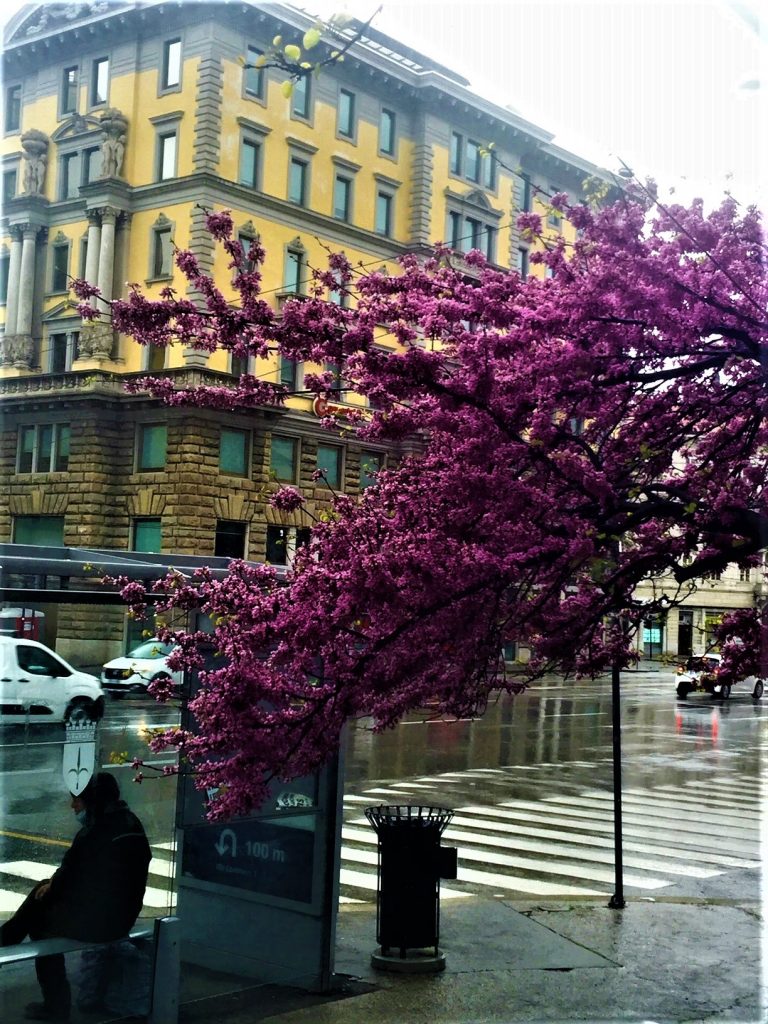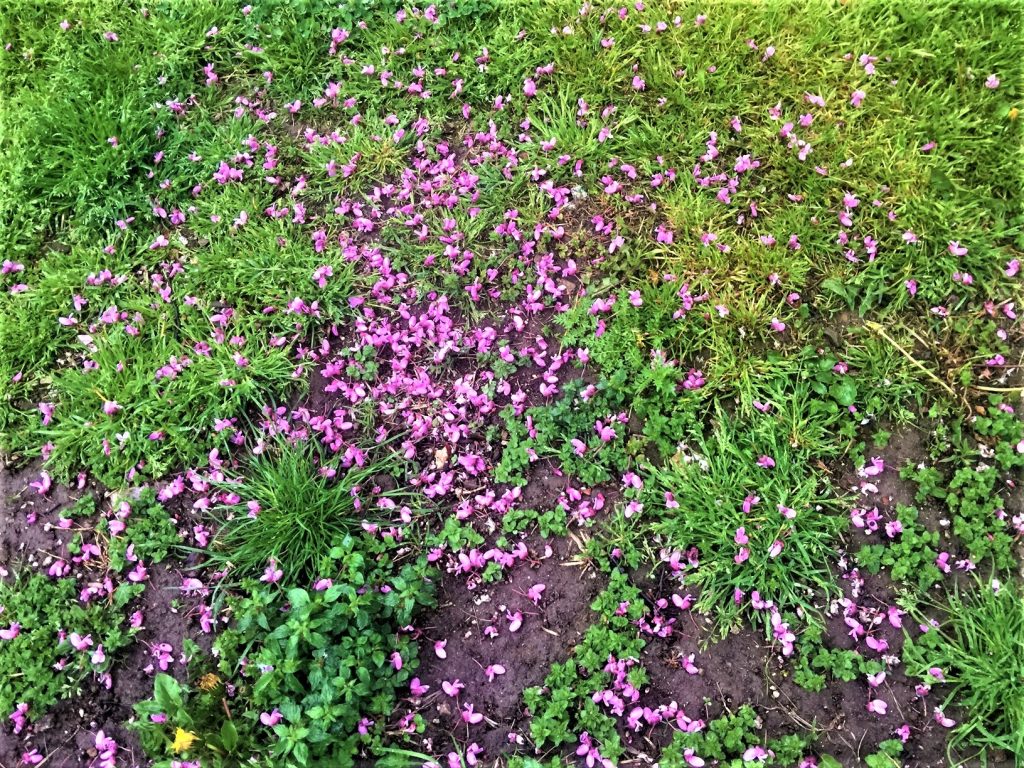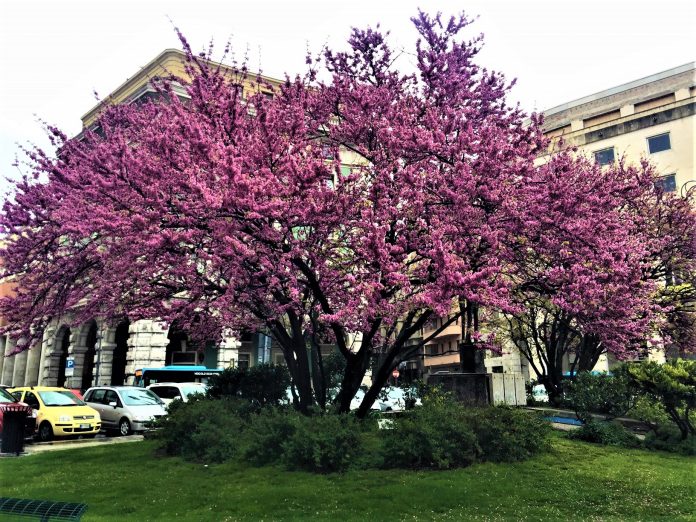by Alessandra Ressa
A photo of one of Trieste’s magnificent Judas trees in bloom on a sunny day wouldn’t have really rendered the astounding beauty of it all. So I chose a windy day in this cool Spring to lose myself in contemplation under the branches of this tree in full bloom and admire the little droplets of rain on its abundant and plump pink flowers.

There are many such beauties in Trieste – along the road to the main university building, in untended gardens, in Porto Vecchio. However, Piazza Oberdan has probably the biggest surviving Judas tree in town and to see it in full bloom, which only lasts a few days (so hurry!) is quite an experience. Shaped like a giant umbrella, it fills the otherwise grayish square with a bright, thick, pink mass that will simply fill your heart with wonder and positive thoughts.

To be fair, there are two such trees next to each other in the central flowerbed of the square. Only one, however, seems to be able to offer the Spring bloom in all its beauty, with every single branch covered in flowers.
At this point of your reading, while putting your shoes on to rush to Piazza Oberdan to enjoy this spectacle while it lasts, you may be wondering where the bizarre name comes from. Officially known as Cercis siliquastrum, the tree is native to Southern Europe and Western Asia, and grows abundantly in Israel.
The name is related to the myth that Judas Iscriot hung himself from this tree after his betrayal of Jesus Christ. Another explanation relates it to a derivation from the French Arbre de Judée (tree of Judea) where the tree was, and still is, commonly tended and appreciated. Its scientific name comes from ancient Greek and Latin, where Cerci, from the Greek kerkis, means “shuttle” because of the seed pods resemblance to a weavers tool, while siliquatstrum comes from Latin siliqua, “pod”.

The incredible feature of Judas trees is that the blooms, which appear between mid and end of April in Trieste, are produced on the older growth and cover the stems, branches and sometimes even grow on the trunk. Foliage only comes later, heart shaped, bright green and fresh and as attractive as the blooms themselves. In Autumn, the foliage turns golden yellow, but the feature of Cercis in this season are the clusters of reddish purple flattened seed pods which hang from the branches.

There is something very Japanese in all this. Despite the fact that it’s not an ornamental cherry tree like the ones you can admire everywhere in Japan during Springtime, this special Triestine Judas tree definitely does the trick if you are longing for hanami (cherry tree viewing) in Trieste.
Every Spring, before Covid-19 modified my whole teaching methods, I used to walk my students to Piazza Oberdan, where we sat under the Judas tree in bloom and let the pink, delicate petals gently fall on us while composing haikus, short Japanese-style poems made of 3 lines with respectively 5-7-5 syllables. It’s a great exercise for English learners, that allows to play with words, and find the true poet in each of us. Throughout the years, I saved all of my students’ haikus. Here is one written by a 9-year old Lorenzo in 2018 under this same tree:
All this pink touches
a soft spot in my bosom
while you hold my hand































Wonderful, thanks for sharing with us your appreciation of these trees, which they are also very resilient…as a landscape architect I am often lost in such thoughts and mesmerising experiences…Best Giacomo